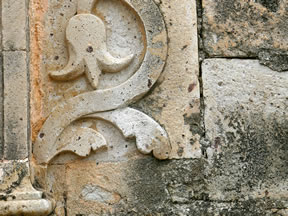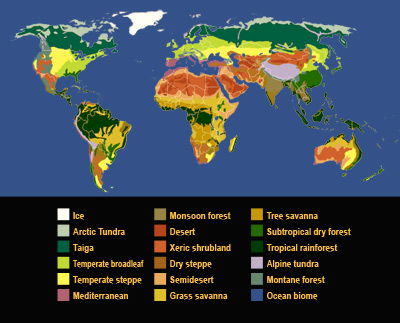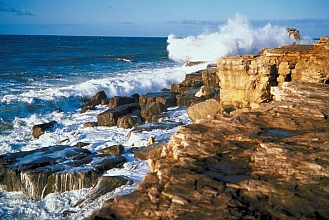Acid rain is affecting the coastal oceans much more than the rest of the ocean areas.
Click on image for full size
Jupiter Images/National Science Foundation
Acid Rain Has Greater Impact on Coastal Ocean Waters
News story originally written on September 7, 2007
Acid rain is what happens when some types of air pollution is washed out of the sky by rain. Power plants, factories, farms, houses, and cars all put pollution into the atmosphere. Sometimes, this pollution mixes with water in the air to form acids; then when it rains or snows, the acid falls onto land or into water on the Earth.
Some scientists have learned that when acid rain falls into the oceans, it damages the coastal areas of the ocean more then the rest of the ocean.
When coastal areas become more acidic, marine animals such as sea urchins, corals, and certain types of planktons have a hard time creating exoskeletons (their hard outer shells). Because these animals are an important food source for other animals in the ocean, if they don't survive the food chain of the entire ocean ecosystem could be affected.
You might also be interested in:

Have you ever heard of acid rain? Acid rain is what happens when some types of air pollution is washed out of the sky by rain. Sometimes, the pollution can be washed out by snow, sleet, hail, mist or fog,
...more
Biomes are large areas of the world where there are similar plants, animals, and other living things. The living things are adapted to the climate. Explore the links below to learn more about different
...more
Scientists have learned that Mount Hood, Oregon's tallest mountain, has erupted in the past due to the mixing of two different types of magma. Adam Kent, a geologist at Oregon State University, says this
...more
The Earth's mantle is a rocky, solid shell that is between the Earth's crust and the outer core. The mantle is made up of many different reservoirs that have different chemical compositions. Scientists
...more
Some faults look strong and like they wouldn’t cause an earthquake. But it turns out that they can slip and slide like weak faults causing earthquakes. Scientists have been looking at one of these faults
...more
The sun goes through cycles that last approximately 11 years. These solar cycle include phases with more magnetic activity, sunspots, and solar flares. They also include phases with less activity. The
...more
Studying tree rings doesn't only tell us the age of that tree. Tree rings also show what climate was like while the tree was alive. This means that tree rings can tell us about climates of the past. Two
...more















